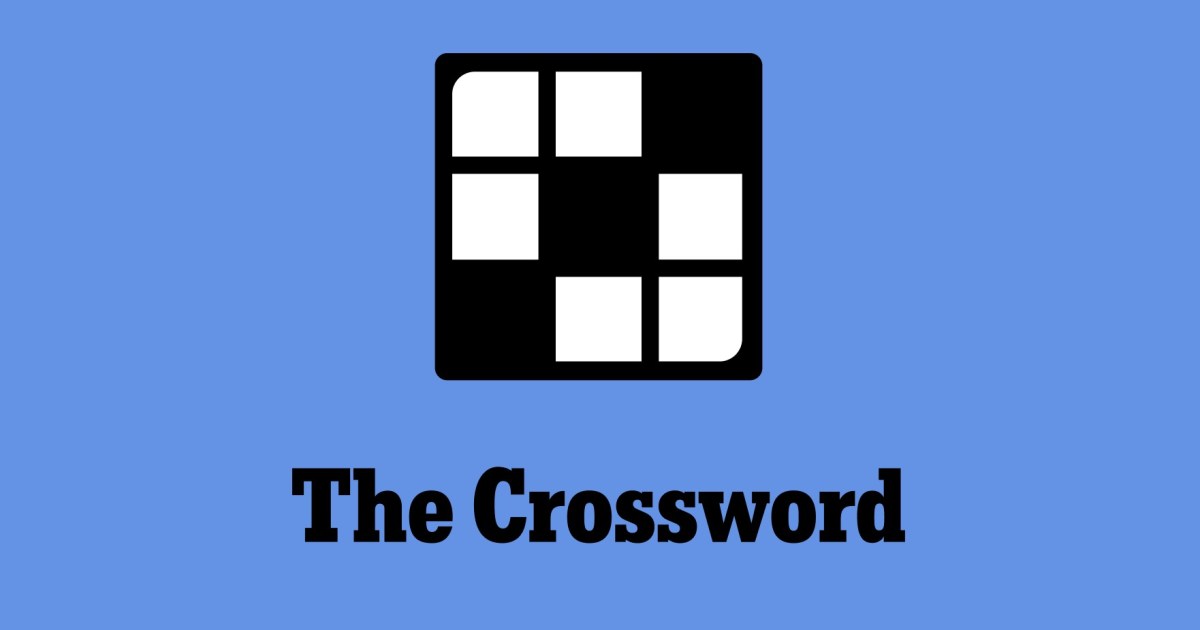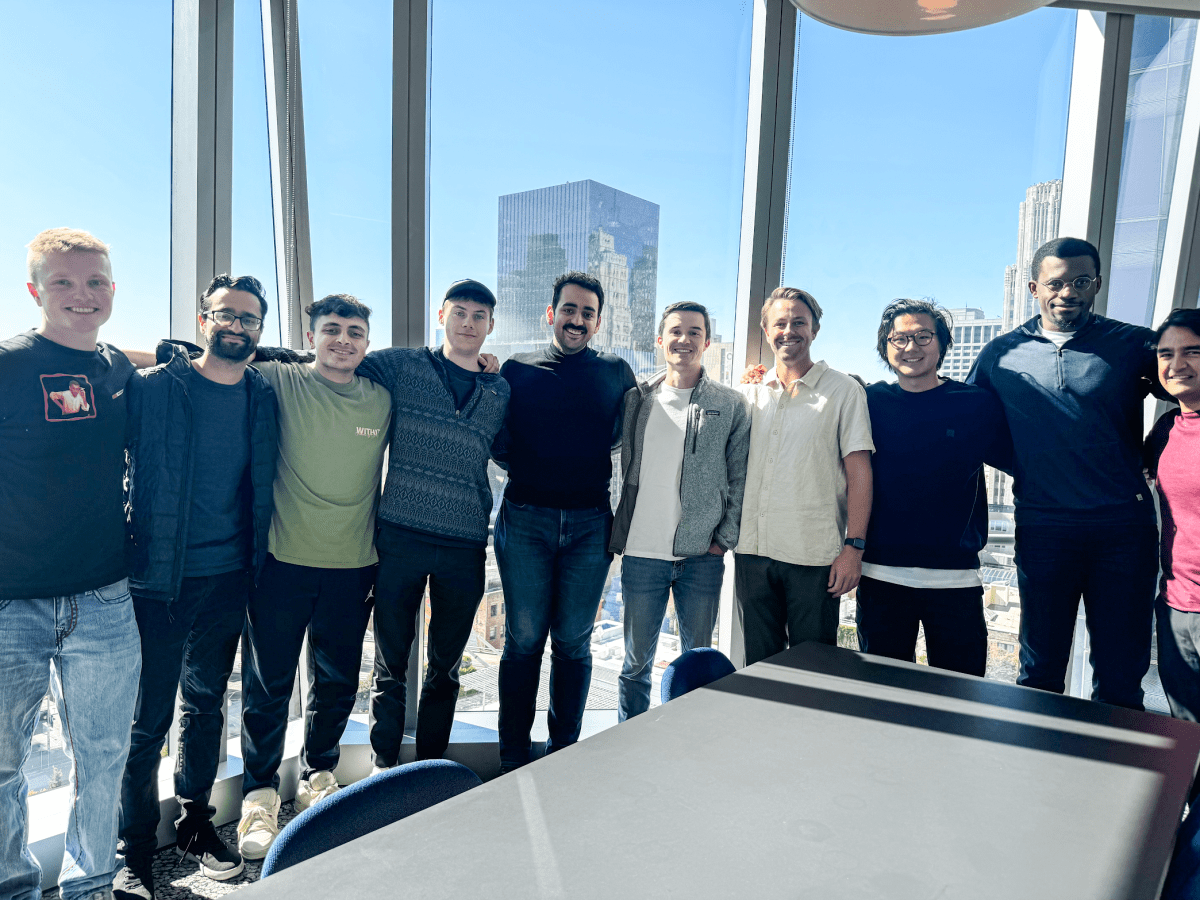Technology
Y Combinator is being criticized after it backed an AI startup that admits it basically cloned another AI startup

A Y Combinator startup named PearAI launched with an X post thread and YouTube video on Saturday and created immediate controversy. And some of that is splashing onto YC itself.
PearAI offers an AI coding editor. The startup’s founder Duke Pan has openly said that it’s a cloned copy of another AI editor called Continue, which was covered under the Apache open source license. But PearAI made a major misstep: PearAI originally slapped its own made-up closed license on it, called the Pear Enterprise License, which Pan admitted was written by ChatGPT.
Changing a license like this is a big deal in the open source world. Not only are there legalities involved in violating a software license, but it defeats the whole purpose of open source, which is about community building, sharing, and contributing. In an apology PearAI’s Pan posted on Monday, he said that the project has now been released under the same Apache open source license as the original project.
The launch thread went viral with thousands of comments by Sunday. Some were congratulatory, but others were vicious in pointing out the licensing and the fact that PearAI wasn’t so much a fork with new stuff added, but a replica with a new name. Pan admitted as much in his apology.
So many angry comments were made on Pan’s launch thread that X put a community note on it that read: “Pear is a fork of Continue.dev, an open-source AI code editor. PearAI used Continue.dev’s code and mass-replaced all references to ‘Continue’ to ‘PearAI’ to mislead people into believing that they built this product on their own.”
This note wasn’t accurate, either. PearAI did say in some of its materials that the project was a clone (also known as a fork) of Continue as well as the original project that Continued used, VSCode. X subsequently removed that note.
Pan apologized for how hard it was to find that information, too. He said that one way he and his cofounder, Nang Ang, “screwed up, critically, was not being clear enough about this … doing so upon a fork of others’ work without many new features, and talking about it so publicly online, made it look like we were stealing the work of others as our own.”
On Sunday, Continue jumped in with by posting a subtle threat that it was “ecstatic to see the ecosystem that has formed around us. But open source can’t be taken for granted—it is a movement built on trust, and on respect for contributions, licenses, and intellectual property.”
Y Combinator CEO Garry Tan got involved, too. He defended PearAI with several tweets. “Don’t understand why people are dragging a new project when literally it’s open source Apache license and that’s *the reason* why open source is awesome” one read. As you might imagine, people pointed out that it was changed to an Apache license after the uproar.
There were other reasons this project caught ire. Pan boasted how he “just quit my 270 000$ job at Coinbase” to do this startup, even though this was about as far from an original idea as a startup can get. In addition to Continue, another big competitor is Cursor.
On top of that, YC has funded two other AI code editors already, Void and Melty, as the mob was quick to point out. To which Tan replied on X, “More choice is good, people building is good, if you don’t like it don’t use it.”
Others criticized YC for selecting PearAI into its cohort at all. Blogger Sven Schnieders wrote that PearAI is an example of the “the decline of YC” because it accepted a company that is “nothing more than a codebase copied from another YC-backed company.”
On Hacker News, the site for programmers owned by YC, a commenter wrote that the debacle “says more about YC than this particular founder (lots of these types nowadays): i.e. their process, their due diligence.” Another wrote, “Is it typical for VC to just throw money at projects without any sort of oversight/auditing of, oh jeez, IDK, Licensing/Legal issues?”
YC’s plans to double from two cohorts a year to four isn’t likely to ease this perception, or this risk.
The whole uproar probably says as much about how eager all VCs are to fund AI startups as it does about YC’s love of this particular ilk of them.
Tan could not be immediately reached for comment. PearAI did not have further comment.
Technology
NYT Crossword: answers for Monday, September 30


The New York Times crossword puzzle can be tough! If you’re stuck, we’re here to help with a list of today’s clues and answers.
Servers computers
Tatakan Rack Server 1U 350mm Cantilever Promo Hagane

https://www.tokopedia.com/okthastore/tatakan-rack-server-1u-350mm-cantilever-promo-hagane.
source
Technology
Razer’s Kraken V4 Pro supports simultaneous audio playback

Razer’s Kraken headset lineup has grown by one more product with the launch of the Kraken V4 Pro, which the company announced over the weekend at RazerCon alongside other products like the Freyja haptic seat cushion. The Kraken line has been around for ages at this point. Every year or two Razer releases a new generation of the headset, updating it with a few new features and improving on stuff that was already there.
This time around, Razer has kind of turned the Kraken on its head, offering what feels like the biggest shakeup for the Kraken headset lineup (and Razer) in a while – simultaneous audio playback. This might not seem like a big deal, but it’s not a very common feature. So it’s definitely more game-changing than one might assume. As it opens up the Razer Kraken V4 Pro to those who want a headset that can play audio from multiple sources at the same time.
Specifically, those who might want the game audio filtering in while listening to music from their phone. Or in my case, while chatting from the Discord mobile app. The Kraken V4 Pro accomplishes this with the help of a base station which Razer is calling the OLED Control Hub. It has ports for separate audio sources so you can connect your PC and your console. But it also allows a Bluetooth connection to play audio alongside one of those sources. I feel like this is something that Razer fans have wanted for a while. Because I know I’ve been hoping for it for years. And I can’t be the only one.
The Razer Kraken V4 Pro headset comes with Sensa HD Haptics
The inclusion of a base station and simultaneous audio playback are big features, but they’re far from the Kraken V4 Pro’s only notable one. The headset also features Razer’s Sensa HD Haptics. A feature that it launched a few years ago to beef up game immersion through audio that you can feel. Razer is trying to sell the gamer on total sensory immersion for games, and the Kraken V4 Pro seems to be a piece of that puzzle.
When you pair the headset with the use of something like the Freyja, which Razer no doubts hopes you’ll do, you get haptic feedback through the headset and the seat cushion all at once. Delivering a sensory experience in gaming that you’ve probably never imagined existed. Razer says that gamers will be able to expect a “sensory experience that blurs the lines between in-game action and reality, feeling everything from the whizz of bullets to the subtle vibrations of distant thunderstorms.”
Four modes of connectivity provide even more possibilities
Another big first for Razer headsets is the Kraken V4 Pro’s connectivity options. You already know it can link up through Bluetooth and through the use of Razer HyperSense via the OLED Control Hub. It can also connect through a wired USB cable or a wired 3.5mm audio cable. So you can use the headset with essentially anything. If your device doesn’t have a USB port or the capability to connect to the Control Hub, no worries. You can likely connect the headset through Bluetooth or the 3.5mm audio cable.
That will go a long way to convince gamers this is a headset worth spending the money on. And that’s a good thing for Razer, considering this headset’s high price. The Kraken V4 Pro will cost $399.99, making it Razer’s most expensive headset to date. It’s available as of September 28 and you can pick it up directly from Razer, or through retail partners like Best Buy or Amazon. Razer also launched the BlackWidow V4 Pro 75 earlier this month.
Technology
Songs from Adele and others are returning to YouTube as SESAC agrees to a new deal

Update, September 30, 4:30PM ET: YouTube says it has reached a deal with SESAC, and that the affected songs will be returning to the platform soon. A spokesperson sent the following comment: “We’re pleased that SESAC reconsidered our offer. We’ve reached a deal and content will come back up shortly. We appreciate everyone’s patience during this time.”
The original story, headlined “YouTube blocks songs from artists including Adele and Green Day amid licensing negotiations,” follows unedited.
Songs from popular artists have begun to disappear from YouTube as the platform’s deal with the performing rights organization SESAC (Society of European Stage Authors and Composers) approaches its expiration date. As reported by Variety, certain songs by Adele, Green Day, Bob Dylan, R.E.M., Burna Boy and other artists have been blocked in the US, though their entire catalogs aren’t necessarily affected. Videos that have been pulled, like Adele’s “Rolling in the Deep,” now just show a black screen with the message: “This video contains content from SESAC. It is not available in your country.”
In a statement to Engadget, a YouTube spokesperson said the platform has been in talks with SESAC to renew the deal, but “despite our best efforts, we were unable to reach an equitable agreement before its expiration. We take copyright very seriously and as a result, content represented by SESAC is no longer available on YouTube in the US. We are in active conversations with SESAC and are hoping to reach a new deal as soon as possible.” According to a source that spoke to Variety, however, the deal hasn’t even expired yet — it’ll reportedly terminate sometime next week — and the move on YouTube’s part may be a negotiation tactic. SESAC has not yet released a statement.
Servers computers
Rent HP Tower Server Price | HP Blade Server Rental Cost | HP Rack Server Rental India
Technology
11x.ai, a developer of AI sales reps, has raised $50M Series B led by A16Z, sources say

11x.ai, a startup that develops AI-powered sales development bots, has secured roughly $50 million in Series B funding, TechCrunch has learned. The new round was led by Andreessen Horowitz, valuing the company at around $350 million, multiple sources told TechCrunch.
The recent deal follows the company’s $24 million Series A, which was led by Benchmark with the participation of other investors including 20VC, Project A, Lux Capital, and SV Angel. While 11x.ai announced its Series A round earlier this month, we’ve learned that the deal closed earlier in 2024. The company was valued at $90 million during its Series A, according to one source.
11x.ai and Andreessen Horowitz didn’t immediately respond to a request for comment.
Hasan Sukkar, 11x’s founder and CEO, told TechCrunch that the company is approaching $10 million in annual recurring revenue. This implies that investors valued the startup at about 35 times ARR, a multiple that’s a notch more grounded than heady valuations recently garnered by other AI-powered companies with similar revenues. For example, Hebbia, a large document search startup, has raised a Series B at 54 times ARR, TechCrunch reported in July.
While Series B places 11x.ai ahead of competitors in terms of valuation and total capital, investors told TechCrunch that it’s still too early to tell whether the company has established a significant lead over its rivals. 11x.ai is one of many quickly growing startups building AI sales development representatives, or AI SDRs. Other startups working on similar solutions include Reggie.ai, AiSDR and Artisan. Incumbents such as Salesforce have also introduced products that work as autonomous sales agents.
Although some investors are wary of backing AI SDR startups because it is hard to distinguish these companies’ offerings from each other, 11x’s Series B shows that other VCs are not afraid to make a larger bet on one of these startups.
11x.ai currently has two AI bots, or what the company is calling “automated digital workers.” Alice is an AI SDR that handles sales lead generation, research and customer outreach. The company recently introduced Jordan, an AI phone sales representative that speaks over 30 languages and can handle inbound and outbound conversations with prospective human buyers.
The company told TechCrunch last year that they’re developing AI bots for talent acquisition and human resources. Now that 11x.ai has more capital, it may focus on expanding its suite of digital employees beyond just sales representatives.
-

 Womens Workouts1 week ago
Womens Workouts1 week ago3 Day Full Body Women’s Dumbbell Only Workout
-

 Technology2 weeks ago
Technology2 weeks agoWould-be reality TV contestants ‘not looking real’
-

 Science & Environment2 weeks ago
Science & Environment2 weeks ago‘Running of the bulls’ festival crowds move like charged particles
-

 News1 week ago
News1 week agoOur millionaire neighbour blocks us from using public footpath & screams at us in street.. it’s like living in a WARZONE – WordupNews
-

 Science & Environment2 weeks ago
Science & Environment2 weeks agoHow to wrap your mind around the real multiverse
-

 Science & Environment2 weeks ago
Science & Environment2 weeks agoHow to unsnarl a tangle of threads, according to physics
-

 Science & Environment2 weeks ago
Science & Environment2 weeks agoMaxwell’s demon charges quantum batteries inside of a quantum computer
-

 Science & Environment2 weeks ago
Science & Environment2 weeks agoLiquid crystals could improve quantum communication devices
-

 Science & Environment2 weeks ago
Science & Environment2 weeks agoPhysicists are grappling with their own reproducibility crisis
-

 Science & Environment2 weeks ago
Science & Environment2 weeks agoSunlight-trapping device can generate temperatures over 1000°C
-

 Science & Environment2 weeks ago
Science & Environment2 weeks agoHyperelastic gel is one of the stretchiest materials known to science
-

 Science & Environment2 weeks ago
Science & Environment2 weeks agoITER: Is the world’s biggest fusion experiment dead after new delay to 2035?
-

 News2 weeks ago
News2 weeks agoYou’re a Hypocrite, And So Am I
-

 Science & Environment2 weeks ago
Science & Environment2 weeks agoQuantum ‘supersolid’ matter stirred using magnets
-

 Sport2 weeks ago
Sport2 weeks agoJoshua vs Dubois: Chris Eubank Jr says ‘AJ’ could beat Tyson Fury and any other heavyweight in the world
-

 Science & Environment2 weeks ago
Science & Environment2 weeks agoWhy this is a golden age for life to thrive across the universe
-

 Science & Environment2 weeks ago
Science & Environment2 weeks agoQuantum forces used to automatically assemble tiny device
-

 Science & Environment2 weeks ago
Science & Environment2 weeks agoCaroline Ellison aims to duck prison sentence for role in FTX collapse
-

 Science & Environment2 weeks ago
Science & Environment2 weeks agoNuclear fusion experiment overcomes two key operating hurdles
-

 Science & Environment2 weeks ago
Science & Environment2 weeks agoLaser helps turn an electron into a coil of mass and charge
-

 Science & Environment2 weeks ago
Science & Environment2 weeks agoNerve fibres in the brain could generate quantum entanglement
-

 Science & Environment2 weeks ago
Science & Environment2 weeks agoTime travel sci-fi novel is a rip-roaringly good thought experiment
-

 News2 weeks ago
News2 weeks agoIsrael strikes Lebanese targets as Hizbollah chief warns of ‘red lines’ crossed
-

 CryptoCurrency2 weeks ago
CryptoCurrency2 weeks agoCardano founder to meet Argentina president Javier Milei
-

 Science & Environment1 week ago
Science & Environment1 week agoMeet the world's first female male model | 7.30
-

 Womens Workouts1 week ago
Womens Workouts1 week agoBest Exercises if You Want to Build a Great Physique
-

 Science & Environment2 weeks ago
Science & Environment2 weeks agoWhy we need to invoke philosophy to judge bizarre concepts in science
-

 CryptoCurrency2 weeks ago
CryptoCurrency2 weeks agoDZ Bank partners with Boerse Stuttgart for crypto trading
-

 CryptoCurrency2 weeks ago
CryptoCurrency2 weeks agoEthereum is a 'contrarian bet' into 2025, says Bitwise exec
-

 Womens Workouts1 week ago
Womens Workouts1 week agoEverything a Beginner Needs to Know About Squatting
-

 Womens Workouts1 week ago
Womens Workouts1 week ago3 Day Full Body Toning Workout for Women
-

 Science & Environment2 weeks ago
Science & Environment2 weeks agoA slight curve helps rocks make the biggest splash
-

 News2 weeks ago
News2 weeks ago▶️ Media Bias: How They Spin Attack on Hezbollah and Ignore the Reality
-

 Science & Environment2 weeks ago
Science & Environment2 weeks agoQuantum time travel: The experiment to ‘send a particle into the past’
-

 CryptoCurrency2 weeks ago
CryptoCurrency2 weeks agoBitcoin miners steamrolled after electricity thefts, exchange ‘closure’ scam: Asia Express
-

 CryptoCurrency2 weeks ago
CryptoCurrency2 weeks agoDorsey’s ‘marketplace of algorithms’ could fix social media… so why hasn’t it?
-

 CryptoCurrency2 weeks ago
CryptoCurrency2 weeks agoRedStone integrates first oracle price feeds on TON blockchain
-

 CryptoCurrency2 weeks ago
CryptoCurrency2 weeks agoBitcoin bulls target $64K BTC price hurdle as US stocks eye new record
-

 CryptoCurrency2 weeks ago
CryptoCurrency2 weeks agoBlockdaemon mulls 2026 IPO: Report
-

 News2 weeks ago
News2 weeks agoBrian Tyree Henry on voicing young Megatron, his love for villain roles
-

 CryptoCurrency2 weeks ago
CryptoCurrency2 weeks agoCoinbase’s cbBTC surges to third-largest wrapped BTC token in just one week
-

 News1 week ago
News1 week agoFour dead & 18 injured in horror mass shooting with victims ‘caught in crossfire’ as cops hunt multiple gunmen
-

 Travel7 days ago
Travel7 days agoDelta signs codeshare agreement with SAS
-

 Politics5 days ago
Politics5 days agoHope, finally? Keir Starmer’s first conference in power – podcast | News
-

 Science & Environment2 weeks ago
Science & Environment2 weeks agoBeing in two places at once could make a quantum battery charge faster
-

 Science & Environment2 weeks ago
Science & Environment2 weeks agoA new kind of experiment at the Large Hadron Collider could unravel quantum reality
-

 Science & Environment2 weeks ago
Science & Environment2 weeks agoHow one theory ties together everything we know about the universe
-

 Science & Environment2 weeks ago
Science & Environment2 weeks agoFuture of fusion: How the UK’s JET reactor paved the way for ITER
-

 Science & Environment2 weeks ago
Science & Environment2 weeks agoHow do you recycle a nuclear fusion reactor? We’re about to find out
-

 Science & Environment2 weeks ago
Science & Environment2 weeks agoTiny magnet could help measure gravity on the quantum scale
-

 CryptoCurrency2 weeks ago
CryptoCurrency2 weeks agoCrypto scammers orchestrate massive hack on X but barely made $8K
-

 CryptoCurrency2 weeks ago
CryptoCurrency2 weeks agoLow users, sex predators kill Korean metaverses, 3AC sues Terra: Asia Express
-

 CryptoCurrency2 weeks ago
CryptoCurrency2 weeks ago‘No matter how bad it gets, there’s a lot going on with NFTs’: 24 Hours of Art, NFT Creator
-

 CryptoCurrency2 weeks ago
CryptoCurrency2 weeks agoSEC asks court for four months to produce documents for Coinbase
-

 Sport2 weeks ago
Sport2 weeks agoUFC Edmonton fight card revealed, including Brandon Moreno vs. Amir Albazi headliner
-
Business2 weeks ago
How Labour donor’s largesse tarnished government’s squeaky clean image
-

 Technology2 weeks ago
Technology2 weeks agoiPhone 15 Pro Max Camera Review: Depth and Reach
-

 News2 weeks ago
News2 weeks agoBrian Tyree Henry on voicing young Megatron, his love for villain roles
-

 Womens Workouts1 week ago
Womens Workouts1 week agoHow Heat Affects Your Body During Exercise
-

 Womens Workouts1 week ago
Womens Workouts1 week agoKeep Your Goals on Track This Season
-

 Science & Environment2 weeks ago
Science & Environment2 weeks agoUK spurns European invitation to join ITER nuclear fusion project
-

 News2 weeks ago
News2 weeks agoChurch same-sex split affecting bishop appointments
-

 Technology2 weeks ago
Technology2 weeks agoFivetran targets data security by adding Hybrid Deployment
-

 CryptoCurrency2 weeks ago
CryptoCurrency2 weeks ago$12.1M fraud suspect with ‘new face’ arrested, crypto scam boiler rooms busted: Asia Express
-

 CryptoCurrency2 weeks ago
CryptoCurrency2 weeks agoDecentraland X account hacked, phishing scam targets MANA airdrop
-

 CryptoCurrency2 weeks ago
CryptoCurrency2 weeks agoCertiK Ventures discloses $45M investment plan to boost Web3
-

 CryptoCurrency2 weeks ago
CryptoCurrency2 weeks agoBeat crypto airdrop bots, Illuvium’s new features coming, PGA Tour Rise: Web3 Gamer
-

 CryptoCurrency2 weeks ago
CryptoCurrency2 weeks agoTelegram bot Banana Gun’s users drained of over $1.9M
-

 CryptoCurrency2 weeks ago
CryptoCurrency2 weeks ago‘Silly’ to shade Ethereum, the ‘Microsoft of blockchains’ — Bitwise exec
-

 CryptoCurrency2 weeks ago
CryptoCurrency2 weeks agoEthereum falls to new 42-month low vs. Bitcoin — Bottom or more pain ahead?
-
Business2 weeks ago
Thames Water seeks extension on debt terms to avoid renationalisation
-
Politics2 weeks ago
‘Appalling’ rows over Sue Gray must stop, senior ministers say | Sue Gray
-

 Science & Environment1 week ago
Science & Environment1 week agoCNN TÜRK – 🔴 Canlı Yayın ᴴᴰ – Canlı TV izle
-

 News1 week ago
News1 week agoWhy Is Everyone Excited About These Smart Insoles?
-

 News4 days ago
News4 days agoUS Newspapers Diluting Democratic Discourse with Political Bias
-

 Politics2 weeks ago
Politics2 weeks agoTrump says he will meet with Indian Prime Minister Narendra Modi next week
-

 Technology2 weeks ago
Technology2 weeks agoCan technology fix the ‘broken’ concert ticketing system?
-

 Health & fitness2 weeks ago
Health & fitness2 weeks agoThe secret to a six pack – and how to keep your washboard abs in 2022
-

 Science & Environment2 weeks ago
Science & Environment2 weeks agoSingle atoms captured morphing into quantum waves in startling image
-

 Science & Environment2 weeks ago
Science & Environment2 weeks agoHow Peter Higgs revealed the forces that hold the universe together
-

 Science & Environment2 weeks ago
Science & Environment2 weeks agoA tale of two mysteries: ghostly neutrinos and the proton decay puzzle
-

 CryptoCurrency2 weeks ago
CryptoCurrency2 weeks ago2 auditors miss $27M Penpie flaw, Pythia’s ‘claim rewards’ bug: Crypto-Sec
-

 CryptoCurrency2 weeks ago
CryptoCurrency2 weeks agoLouisiana takes first crypto payment over Bitcoin Lightning
-

 CryptoCurrency2 weeks ago
CryptoCurrency2 weeks agoJourneys: Robby Yung on Animoca’s Web3 investments, TON and the Mocaverse
-

 CryptoCurrency2 weeks ago
CryptoCurrency2 weeks ago‘Everything feels like it’s going to shit’: Peter McCormack reveals new podcast
-

 CryptoCurrency2 weeks ago
CryptoCurrency2 weeks agoSEC sues ‘fake’ crypto exchanges in first action on pig butchering scams
-

 CryptoCurrency2 weeks ago
CryptoCurrency2 weeks agoBitcoin price hits $62.6K as Fed 'crisis' move sparks US stocks warning
-

 CryptoCurrency2 weeks ago
CryptoCurrency2 weeks agoVonMises bought 60 CryptoPunks in a month before the price spiked: NFT Collector
-

 CryptoCurrency2 weeks ago
CryptoCurrency2 weeks agoVitalik tells Ethereum L2s ‘Stage 1 or GTFO’ — Who makes the cut?
-

 News2 weeks ago
News2 weeks agoBrian Tyree Henry on his love for playing villains ahead of “Transformers One” release
-

 Womens Workouts1 week ago
Womens Workouts1 week agoWhich Squat Load Position is Right For You?
-

 News1 week ago
News1 week agoBangladesh Holds the World Accountable to Secure Climate Justice
-

 TV1 week ago
TV1 week agoCNN TÜRK – 🔴 Canlı Yayın ᴴᴰ – Canlı TV izle
-

 Technology7 days ago
Technology7 days agoRobo-tuna reveals how foldable fins help the speedy fish manoeuvre
-

 Technology2 weeks ago
Technology2 weeks agoIs carbon capture an efficient way to tackle CO2?
-

 Health & fitness2 weeks ago
Health & fitness2 weeks agoThe maps that could hold the secret to curing cancer
-

 Science & Environment2 weeks ago
Science & Environment2 weeks agoThe physicist searching for quantum gravity in gravitational rainbows
-

 CryptoCurrency2 weeks ago
CryptoCurrency2 weeks agoHelp! My parents are addicted to Pi Network crypto tapper
-

 CryptoCurrency2 weeks ago
CryptoCurrency2 weeks agoCZ and Binance face new lawsuit, RFK Jr suspends campaign, and more: Hodler’s Digest Aug. 18 – 24
-

 Fashion Models2 weeks ago
Fashion Models2 weeks agoMixte


You must be logged in to post a comment Login